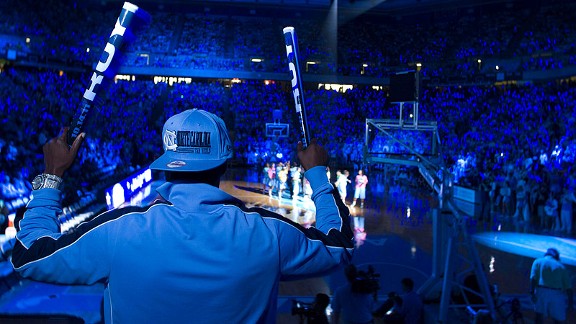With Little Pomp or Fanfare, Practice is Underway: Is Earlier Better?
Posted by BHayes on September 27th, 2013Bennet Hayes is an RTC columnist. He can be reached @HoopsTraveler.
Aaand we’re back. Sort of. Today marks the official return of practice for college basketball players across the country, but unlike in years past, there will be no festive Midnight Madness celebration to announce that we are underway – at least not yet. A new NCAA initiative to allow programs more practice time before their opening games was passed this offseason, and teams are now able to use their 30 days of preseason practice over the span of six weeks, instead of the four weeks it had been in preseasons past. Great, you say — perhaps we will have a cleaner, more efficient brand of basketball ready for opening tip? That has to be the hope, as the extra time should allow for a smoother transition into the year, at least on paper. But in a sport where tradition and ceremony often delivers much of the impact, will the extra weeks of practice improve the play on the floor enough to offset a potential depreciation to the meaning of Midnight Madness?
It’s hard to know how direct a response this rule change is to the game scores that are getting lower and lower and the accompanying grumblings that are getting louder and louder, but it feels like an effort by the NCAA to raise early-season quality of play. While the actual practice time (30 days) remains the same, stretching it out over the course of six weeks should help keep players from feeling overwhelmed, and also offer them the chance to recover and work on individual skills on off days. Nobody is claiming these two weeks will advance basketball 10 years worth of quality, but there’s no way the extra time can’t help improve the product of November and December basketball.
But at what cost? The most glaring tariff is a significant alteration to Midnight Madness. The very core of the event will be different this season, because after all, the gala was birthed as the tip-off for practice on campus. Most schools appear to be keeping the mid-October date for the celebration, but how much excitement will be lost with players already having been at practice for multiple weeks? Even the most ardent MM fan would have to admit that this now arbitrary date for the event has to make it feel slightly contrived, and as we drift further and further from the days where Midnight Madness equaled the beginning of the season, the event should only feel more artificial. I doubt we will be losing Midnight Madness anytime soon, but the purity of the celebration (what little was left) will take a hit here in 2013.
Quantifying the cost/benefit analysis won’t be easy – especially in year one – but the continued evolution of preseason practice, Midnight Madness, and early season competition will be something to keep an eye on over the course of the next few months. What matters most is the product on the floor when the bright lights come on, and a crisper, cleaner November of great college basketball should be more than enough to stifle any complaints about Midnight Madness. What’s more, if the policy shows early success, perhaps we are actually in the beginning stages of a far greater plan for the expansion of offseason practices. That possibility involves many more considerations than just the action on the floor, but with the anti-NCAA army growing louder and stronger, change feels like a better bet than constancy these days.












































